Japan
Wood Products Prices
Dollar Exchange Rates of 9th
January 2017
Japan Yen 116.05
Reports From Japan
Consumer confidence at 3 year high
Japan’s consumer confidence index rose in December an
improvement for the first time in three months. The
December index was the highest for more than three years.
Analysts in Japan have offered little explanation for this
surge in confidence and, while welcoming the upward
trend, the government remains cautious as the change in
confidence over a short period may not indicate an overall
improvement.

Exports drive third quarter growth
The Japan Center for Economic Research (JCER) recently
published the latest forecasts for the Japanese economy by
its Chief Forecaster Hitoshi Sasaki under the title “Is the
Japanese Economy Shifting to a Higher Gear?”
Against the recent modest improvement in third quarter
2016 data, Sasaki writes “Third-quarter growth was fueled
mainly by external demand, as the rise in domestic
private-sector demand remained anemic, still not powerful
enough to generate a virtuous circle of rising incomes
leading to higher expenditure.”
Looking ahead Sasaki says “With emerging economies
recovering from their slowdown and as the growth of the
global economy gradually picks up, we project the
Japanese economy to grow by 0.9% in real terms in fiscal
2016 and again by 0.9% in fiscal 2017, assuming that the
Bank of Japan maintains its quantitative and qualitative
monetary easing policy and that the government provides
substantial stimulus measures.”
See:
http://www.jcer.or.jp/eng/pdf/sa168_eng.pdf
Weak yen boost growth prospects
The yen /dollar exchange rate as the year began was
around yen 118 but the dollar weakened mid-month as the
US Federal Reserve seemed to suggest it was uncertain
when or even if a further interest rate rise would be.
In Tokyo the weaker yen has been welcomed by exporters
and the stock market rallied in the early few days of the
New Year.
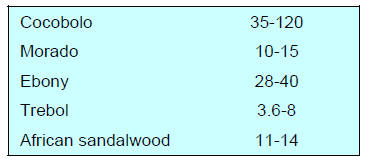
Shortage of affordable family homes - a challenge
to
young couples
Young couples in Japan face a daunting challenge when it
comes to buying their own home. A recent survey has
shown that house prices are rising and that the increase is
outpacing wage growth. In addition while there are
millions of empty homes in Japan there is a shortage of
family accommodation in urban areas.
Over the past 12 months money has poured into the
apartment construction sector which was attracting buyers
looking to secure gains from an investment and because
interest rates on loans are at an all-time low.

Import round up
Doors
Year on year Japan’s September 2016 imports of wooden
doors (HS 441820) were almost unchanged but from a
month earlier they were down slightly. In the first three
quarters of 2016 wooden door imports were around 2%
down on the same period in 2015.
The top four suppliers in order of rank were China, the
Philippines, Indonesia and Malaysia. These four accounted
for around 95% of Japan’s wooden door imports in
September 2016.
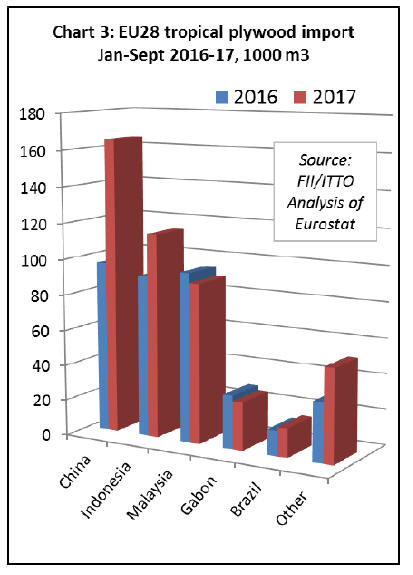
Windows
There was a sharp drop in Japan’s year on year wooden
window imports in September (-19.5) and compared to a
month earlier September 2016 imports dropped 24%.
In the first three quarters of 2016 wooden window imports
were down around 7% compared to the first three quarters
of 2015.
Consistently throughout the year to September shippers in
China and the Philippines have dominated Japan’s imports
of wooden windows. Shipments of wooden windows in
September from the top two suppliers accounted for
around 80% of imports with another 17% being provided
by suppliers in the US.
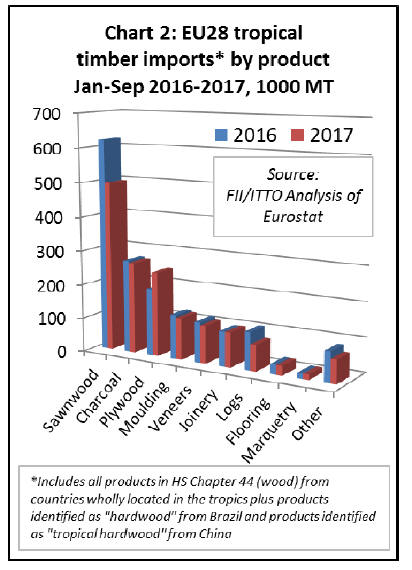
Assembled flooring
Three categories of assembled flooring are included in the data
presented below, HS 441871, 72 and 79.
Flooring shipped under HS441872 accounts for the bulk of
imports (62%) followed by HS 441879 (37%). Shipments of HS
441871 are very small and come primarily from Thailand.
September wooden flooring imports into Japan rose
sharply
(26%) compared to September 2015. Month on month imports
were also up (12.5%).
As was the case in August shippers in China dominated Japan’s
August imports of wooden flooring accounting for 45% of all
imports. The other main suppliers were Indonesia (11%) and
Vietnam (6%).
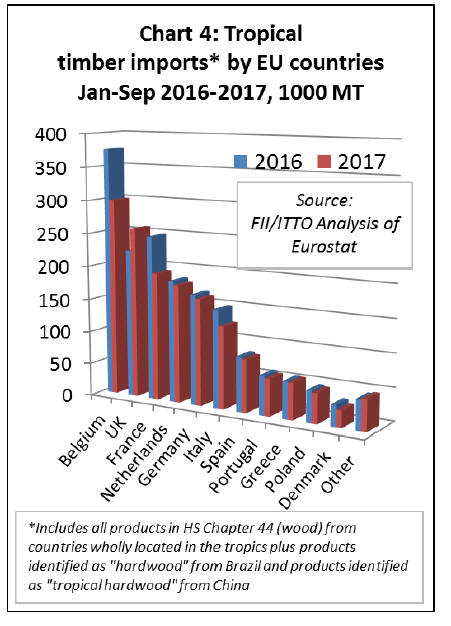
Plywood
The figure below depict the combined imports of 4
categories of plywood, HS 441210/31/32 and 39. Two
thirds of Japan’s plywood imports fall under HS 441231
and within this category Malaysia (54%) and Indonesia
(40%) are the main suppliers. The other significant
suppliers are China, Taiwan P.o.C and the Philippines.
Shipments of HS 441232 plywood were mainly from
Malaysia and Indonesia with some originating in the EU.
With around 98% of Japan’s September plywood imports
accounted for within the two categories mentioned above
the balance is split between HS 441210 (China the only
supplier in August) and HS 441239 supplied by mainly
China, the Philippines and New Zealand.
 
Trade news from the Japan Lumber Reports (JLR)
For the JLR report please see:
http://www.nmokuzai.
com/modules/general/index.php?id=7
Legal wood use promotion law
A Ministerial ordinance and basic measures for a Legal
Wood Use Promotion Law are scheduled to be adopted by
the end of this year. The law demands wood related
businesses to use legally proven wood products only and
requests to confirm legality on any suspicious products
and not to handle any risky and doubtful products.
Schedule is to have public comments in January then the
ministerial ordinance will be announced officially and
come into effect on May 20, 2017.
Wood dealers, general construction company, house
building company, contractor including contract company
of flooring work are subject to the law. Forest owners and
logging companies are not included but log auction market
is included. Companies need to register as registered wood
dealer and they need to confirm legality of wood products
they handle.
Basically wood products are specific procurement
articles
of the green purchase law. Laminated lumber, plywood,
flooring, furniture, wood chip, pellet, pulp and paper are
included but fiberboard like MDF and particleboard are
not included. There is possibility to include fiberboard in
review of items in three years.
As to judgment of legality, notification of harvest is final
for domestic timber and imported items from advanced
countries are confirmed by authorized documents.
Attached documents are judged by reliability of source of
origin and species but in case it is suspicious, inquiry to
the sources or voluntary measure such as investigation by
the third party are required.
Even if such additional measures are made and found out
it is illegal products, it is not subject to penalty but in case
one continues selling illegal products as legal products,
inspection on the spot and warning are given for wood
dealers and if one is registered, registration is cancelled
and a name is publicly announced.
If one tries to find out legality of a certain item but does
not prove, one can sell for at time being with the condition
to keep it separate from legal products.
The Forestry Agency says that it acknowledges that
distribution amount of legally proved products is limited
yet but it is important to make effort to increase
percentage of legally proven products.
For registration, some fee and registration tax of 15,000
yen are needed Conditions of registration are that one
declares to increase of handling legally proven products as
management policy, one attaches necessary documents,
how one handles measures to prove legality and how one
can keep separate of handling legal products and unproven
products.
South Sea (tropical) logs
Malaysia is in rainy season now and log production is
dropping. Buyers have no option of selecting diameter
class and particular species. India buys almost everything
to fill up ships so they sometimes buy higher priced Japan
sort logs so when the supply gets tight, grade and
destination mean nothing.
Log suppliers naturally intend to raise log prices but the
Japanese importers are not able to buy after the yen gets
weaker more than 10% in one month. However, there are
limited number of plywood mills, which use South Sea
hardwood logs in Japan.
There are two mills in Niigata and a few more in
Hokkaido and the North East so total necessary volume is
not very much so the importers are not panicky even in
this situation. Sarawak meranti regular offer prices are
US$275-278 per cbm FOB, meranti small are US$260 and
super small are US$$245. They are unchanged from
November but future looks higher.
Plywood market
Market prices of imported plywood like concrete forming
panel have been continuously declining since beginning of
the year then in October, Sarawak suppliers proposed
$20increase for new orders. With all these factors, market
mood changed with dropping inventory so feeling of
higher future prices is rapidly prevailing.
After interim book closing finished in September, the
importers and wholesalers completed inventory correction.
Since then tight feeling started on some short items and
low price offers disappeared in the market. At the same
time, supply side was facing approaching rainy season and
log prices would go up during rainy season so they
decided to increase by $20 per cbm FOB then the yen’s
exchange rate has started dropping since late October and
the yen depreciated by about 10% in a month.
Some wholesalers have started purchasing structural
panels and concrete forming panels little by little so the
importers try to procure such items from the suppliers but
by higher suppliers’ prices and sudden change of yen’s
rate, they are unable to procure.
Supply of concrete forming panel for coating is not really
tight but there is no low offers any more. In short, prices
of items, which prices dropped too much, are in correction
stage so the mood changed from bearish to bullish.
The importers need to increase the sales prices of new
orders in December but the movement has not recovered
yet so the prices seem to stay flat or to gradual increase.
Supply of both domestic and imported plywood is getting
tight. Since early November, orders from precutting plants
increased so tight supply gets tighter. On imported
plywood, the suppliers increased the prices by $20 per
cbm in October then the yen has been weakening rapidly
in November so future cost is much higher.
Supply and demand of domestic plywood were balanced
until late October by early placement of orders by
precutting plants then four weather in September and
October delayed construction works so that precutting
plants’ operations were not so high then since late October
weather improved and many construction orders tried to
complete by the end of December so the operations got
sharply up so tight feeling got stronger particularly on
thick panels.
Some precutting plants .go out and try to procure from
wholesalers since direct purchase does not satisfy their
needs.
Meantime, market prices of 12 mm panel of imported
plywood had been declining then the importers and
wholesalers finished inventory adjustment by the end of
September so they quit selling at low prices to tighten the
market so extreme low prices were gone from the market.
In middle of October the supply side increased the export
prices by $20 and weak yen progressed in November.
These factors are nothing but cost up. At the same time,
supplying countries are in rainy season and log supply will
get tight and the prices would go higher so further increase
of export prices is likely in coming months.
Since there is practically no inventories of concrete
forming and structural panel, the importers place orders
for necessary items in November as the customers keep
placing orders little by little. This will lead the price hike
in the market sooner or later.
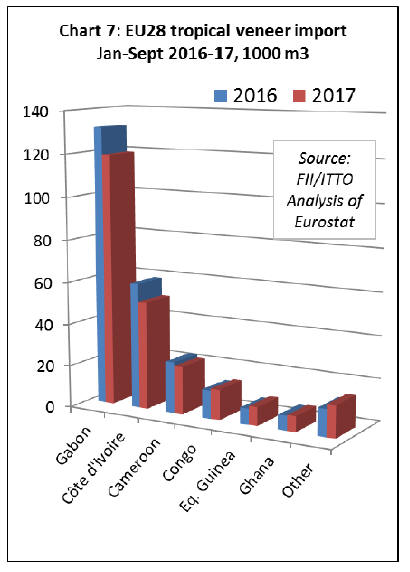
Toyota Housing absorbs Misawa Homes
Toyota Housing Corporation (Nagoya) announced that
Misawa Homes Co., Ltd, (Tokyo) will become subsidiary
company.
Toyota Motor Corporation h as made capital unification
since 2003, Toyota Housing and Misawa Homes jointly
procure building materials, purchase of properties,
development of rental units and units built for sale and
personnel exchange.
Purpose of subsidizing Misawa Homes is to build much
closer cooperation with each other to promote business
and overcome tougher business environment.
Toyota Housing is the top share holder of Misawa Homes
by holding 27.84% share. TOB starting November 28 and
acceptance of allocation of new shares to a third party by
March 2017 will give 51% share of Misawa Homes with
about 20 billion yen.
Misawa Homes will maintain listing at Tokyo and Nagoya
stock exchange.
Both companies will develop new techniques and models,
work together to reduced cost in materials procurement,
production, distribution and systems then work together in
real estate development business.
|